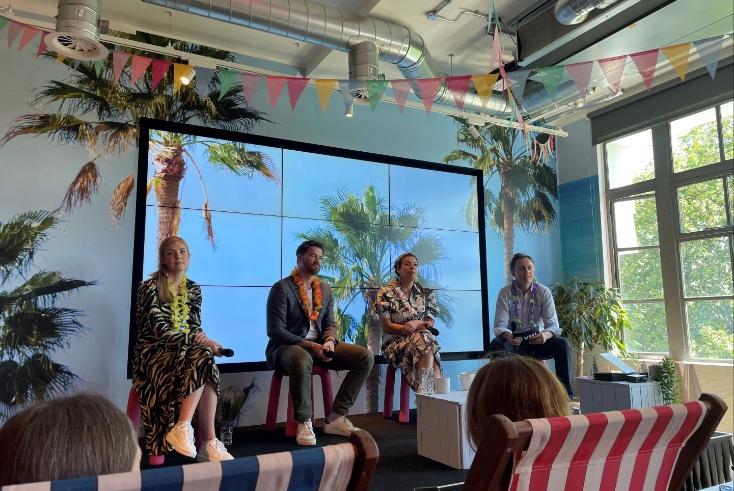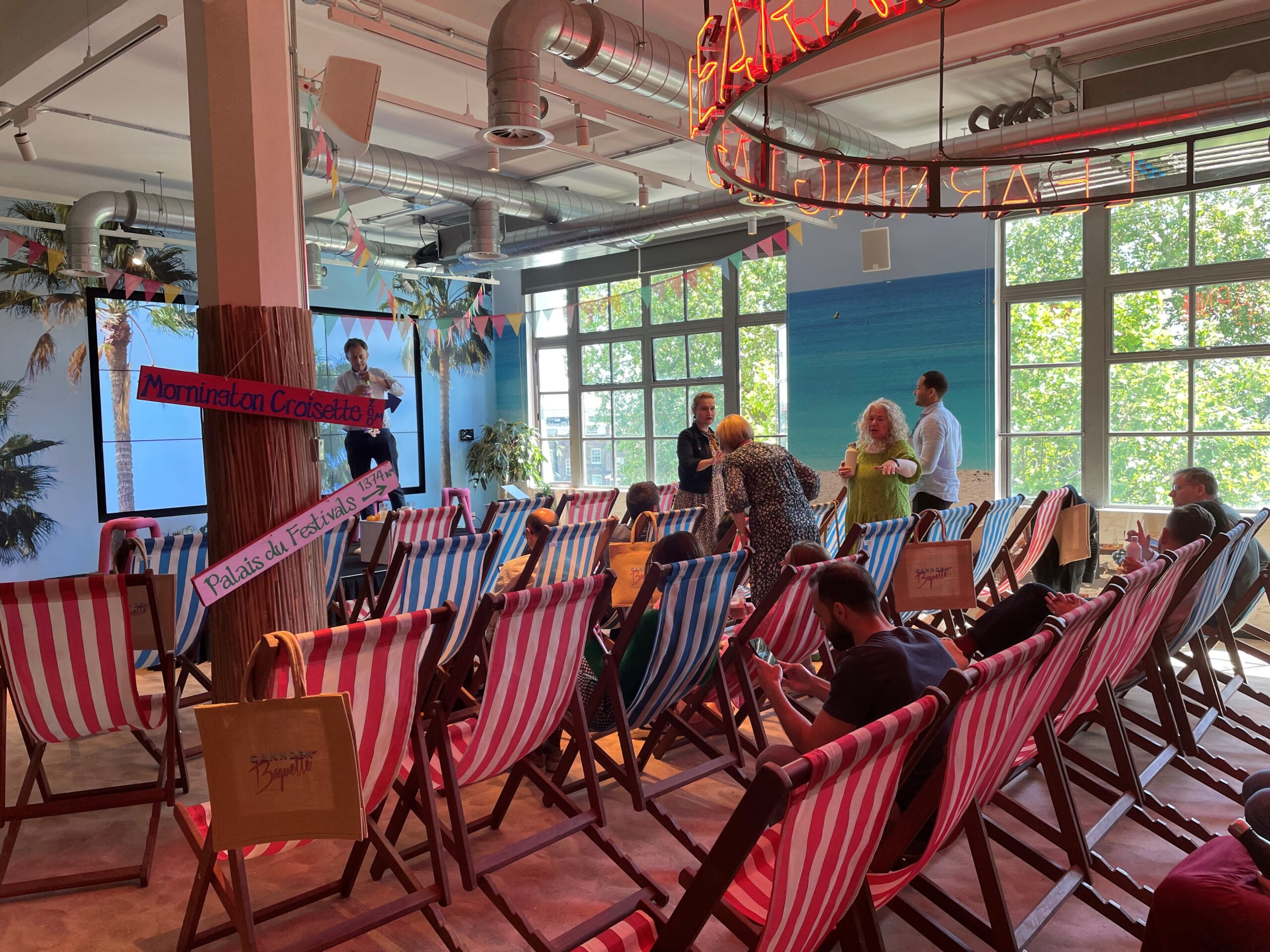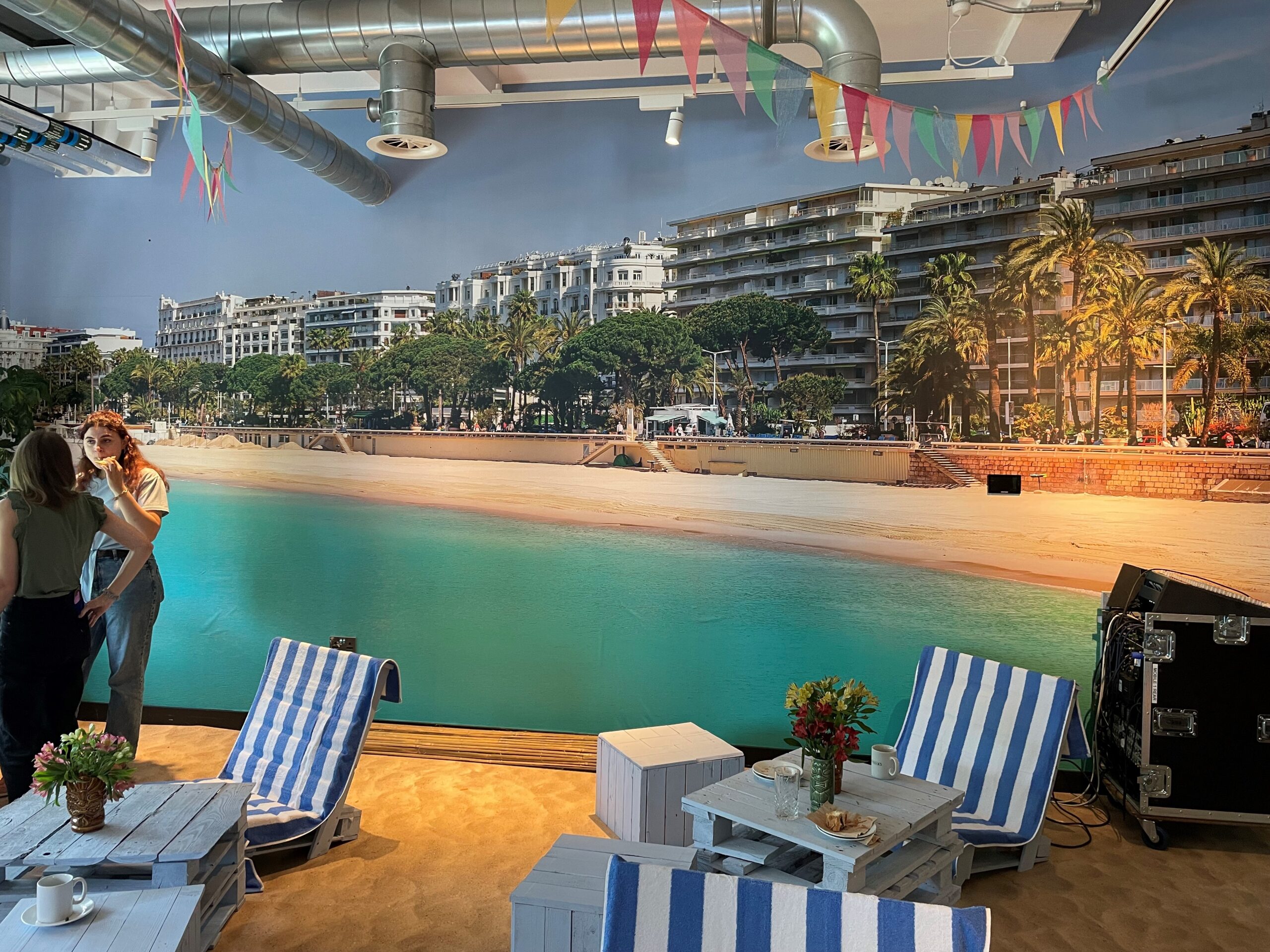How brands can play the long game in a fast-paced world

Are brands ignoring the long term in favour of the short term?
At this year’s VML Cannden Beach event, Ben Worden, chief strategy officer at VML UK, hosted a panel of brands to discuss how to “play the long game” — namely, to create, maintain focus on and build a long-term strategy for brands, agencies and businesses.
The session, which took place at Greater London House transformed to look like Cannes, featured Jen Meyer, head of media and partnerships at Ford Europe; Emma Locker, director of marketing and brand at Boots; and James Davies, head of marketing strategy and effectiveness at HSBC UK.
A context of change
We are all “attempting” to do our jobs at a time when the pace of change is “just incredible”, Worden said.
He highlighted the “tension” between what effectiveness data shows — that “the long game is the most effective in town” — and all of the new tools now at the disposal of brands, agencies and marketers to gain people’s attention, mostly in the short-term sense.
Worden said: “We are at a point in time where we have to balance continuity and change, where we have to balance innovation with consistency, and we have to think about how we can move with the times and be as current as you possibly can, but also how we can be bloody-minded, how we can stick to a task, stick to a strategy and deliver it consistently in order to deliver incremental growth value.”

Since all of the brands on the panel have been around for more than 100 years, Worden wanted to know how they can balance being both “timeless and timely”.
Davies said HSBC’s focus is on “relevance”, about how its products and services help people do things in their lives.
For Locker, she saw a tension in how Boots has to balance long-term brand consistency and short-term sales mechanics.
She stressed that having an overarching purpose, like Boots’ “With You for Life” positioning, keeps the brand strategy, tone of voice and values consistent. However, Locker also emphasised the importance of being “agile, flexible, innovative, responsible, responsive” within an overarching brand strategy.
Meyer echoed this need for flex as she said that brands like Ford need to lean in to their history, find the “differentiator”, but also “be modern”.
She explained: “What is key is you can’t just rely on balance. The only thing that’s constant in the world is change and we don’t want people to think of Ford as they thought of it 10 years ago, 50 years ago. We’re a different company. We’ve evolved and our product portfolio has evolved significantly.”
Indeed, while words such as “quality” and “reliability” are associated with Ford currently, she wants those associations to become “electric vehicles” and “innovation”. This is where shifting brand perception overlaps with building a brand long term.
Selling to stakeholders
Meyer made two recommendations to get stakeholders on side to your ideas. First, figure out who your “allies” are who can advocate.
Secondly, it’s important to choose “the right moment to bring your brand idea”, namely not in “a poorly performing” sales cycle. Instead, do this when the business is “performing really well”, when there is “a bit more headspace”.
Locker made the case for making sure your idea was “in the sweet spot of the Venn diagram” between commercial, customer and brand, as that is where Boots has had “the most success” with stakeholder buy-in.
She also advocated for using “clear customer data” to show what the audience wants.
Davies acknowledged that there is “a tendency for people to gravitate towards shiny things”, but it was “really important” to think about how to sell it in terms of “hearts and minds”.
Referencing HSBC’s partnership with Shelter on the “No Fixed Address” account, he said it’s “not a profitable product” so when looking at “cold, hard numbers, it does not make commercial sense”.
However, the product showed “a more empathetic and caring brand”, rather than a “corporate, cold and aloof bank”, and this has created “a positive brand feeling” from some segments of the audience who are “highly profitable”.

Is it working?
Crucially, how do brands know if a long-term strategy is paying off?
Worden highlighted a quote from marketing expert Mark Ritson from this year’s Cannes Lions festival: “So many brands sunset campaigns when their best days are ahead of them.”
Davies revealed that HSBC uses “four buckets of different sources” to evaluate campaigns and brand perception: econometrics, brand-health indicators, attribution through digital touchpoints and “experimentation”.
He said “sticking consistently” to brand metrics that “you know are going to shift the dial in terms of the behaviour you want” is “key”. A mixture of metrics for the short term to get “a real pulse” on what is happening as well as long-term impact is also crucial.
Davies added that, in 2017, HSBC was found to be “the least effective of all the major banks” in terms of advertising, but long-term monitoring over time has shown it has moved up several positions.




